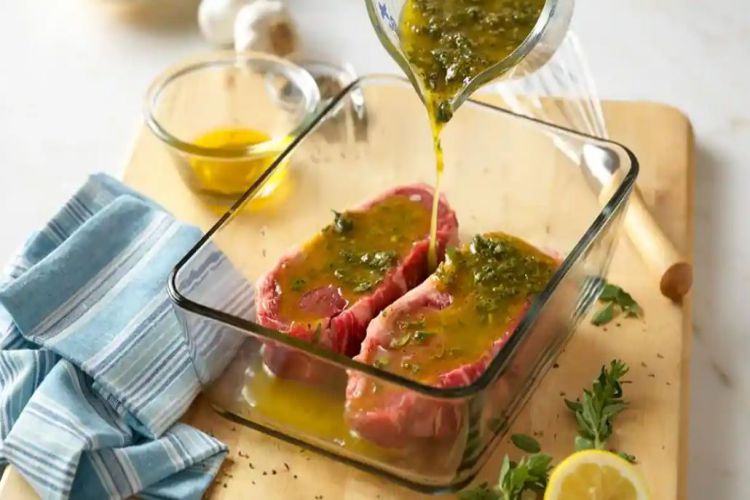 Steak marinades are more than just flavorful liquids that enhance the taste of your favourite cut of beef; they are a complex blend of science and culinary artistry. The art of marinating steak has been passed down through generations, but understanding the science behind it can take your culinary prowess to a whole new level. In this article, we’ll delve into the fascinating world of steak marinades, uncovering the key scientific principles that make them work. From tenderization to flavour infusion, let’s explore what goes on when you marinate your steak.
Steak marinades are more than just flavorful liquids that enhance the taste of your favourite cut of beef; they are a complex blend of science and culinary artistry. The art of marinating steak has been passed down through generations, but understanding the science behind it can take your culinary prowess to a whole new level. In this article, we’ll delve into the fascinating world of steak marinades, uncovering the key scientific principles that make them work. From tenderization to flavour infusion, let’s explore what goes on when you marinate your steak.
The Role Of Acids
One of the fundamental components of tasty steak marinades is acidity, typically provided by ingredients such as vinegar, citrus juice, or yoghurt. The science behind this lies in the acid’s ability to break down the tough muscle fibres in the meat. When acids come into contact with the proteins in the steak, they start to denature, or unwind, the protein molecules. This process, known as protein denaturation, results in a more tender and succulent steak.
Enzymatic Action
Beyond acids, some steak marinades also contain enzymes like bromelain (found in pineapple) or papain (found in papaya). These enzymes work by targeting and breaking down specific proteins in the meat, further contributing to tenderization. Enzymatic action can be particularly useful when marinating tougher cuts of meat, making them more enjoyable to eat.
Osmosis And Flavor Infusion
Marinating steak involves a process called osmosis, which is the movement of water molecules from areas of low solute concentration (the marinade) to areas of high solute concentration (the meat). This process helps to transfer the flavours and seasonings from the marinade into the steak. It’s essential to allow sufficient time for osmosis to occur; a longer marinating time allows for better flavour infusion.
Salt’s Role
Salt is a vital component of most steak marinades. It not only seasons the meat but also enhances its natural flavours by drawing out moisture. Although it may seem strange, the salt creates a brine that is subsequently reabsorbed into the steak as it dissolves into the surface moisture of the meat. This process helps season the meat from within and ensures that it remains moist during cooking.
Flavour Molecules And Aromatics
The flavour molecules in a marinade, such as those found in herbs, spices, garlic, and onions, are responsible for giving the steak its unique taste. These molecules are volatile, meaning they can evaporate easily. By marinating the steak, these flavour molecules are trapped within the meat, resulting in a more intense and aromatic flavour profile when the steak is cooked.
Oil And Emulsion
Including oil in your steak marinade not only adds flavour but also helps create a stable emulsion. An emulsifying ingredient, such as mustard or egg yolk, stabilizes a mixture of two immiscible substances, such as oil and water, to form an emulsion. In a marinade, this emulsion helps distribute both fat-soluble and water-soluble flavour compounds evenly throughout the meat, ensuring a well-rounded taste.
Temperature And Timing
The science of steak marinades is also influenced by temperature and timing. By marinating your steak at the proper temperature—typically in the refrigerator—you can inhibit the growth of dangerous bacteria and promote the activity of enzymes. Additionally, the duration of marination plays a crucial role. While longer marinating times can lead to more flavour infusion and tenderization, excessive marination can result in over-tenderizing the meat, making it mushy.
Conclusion
Steak marinades are an exciting blend of culinary art and science. Understanding the scientific principles behind your steak cooking can take it to the next level. If you want to achieve culinary perfection with a tender and succulent steak, or even a burst in flavor, then mastering the science involved in steak marinades can help. Next time you grill your favourite steak remember there’s more than meets your eye. There’s science cooking on your plate.




